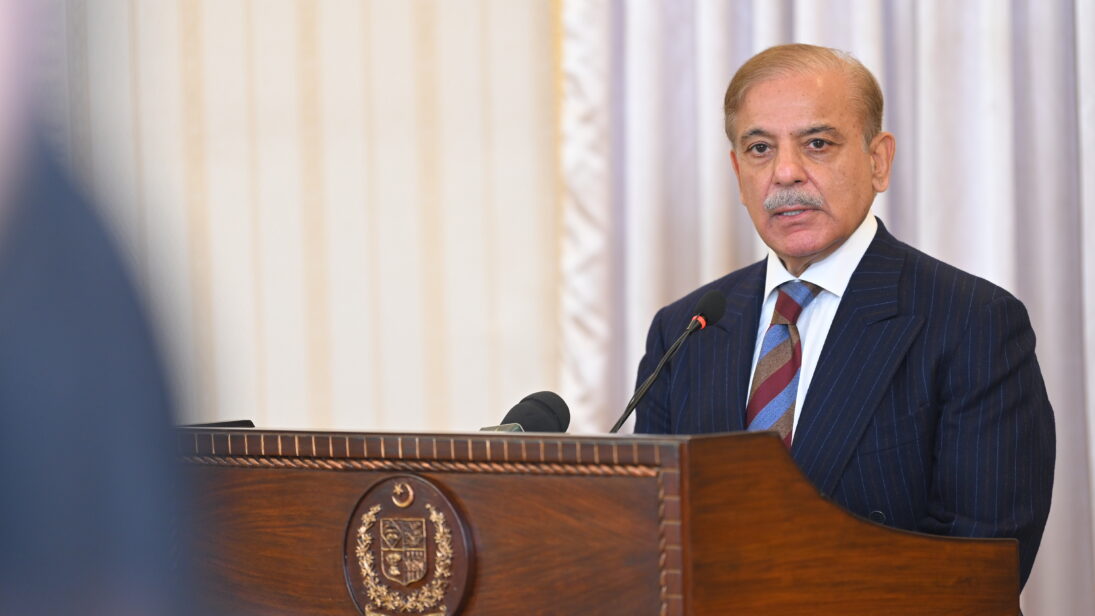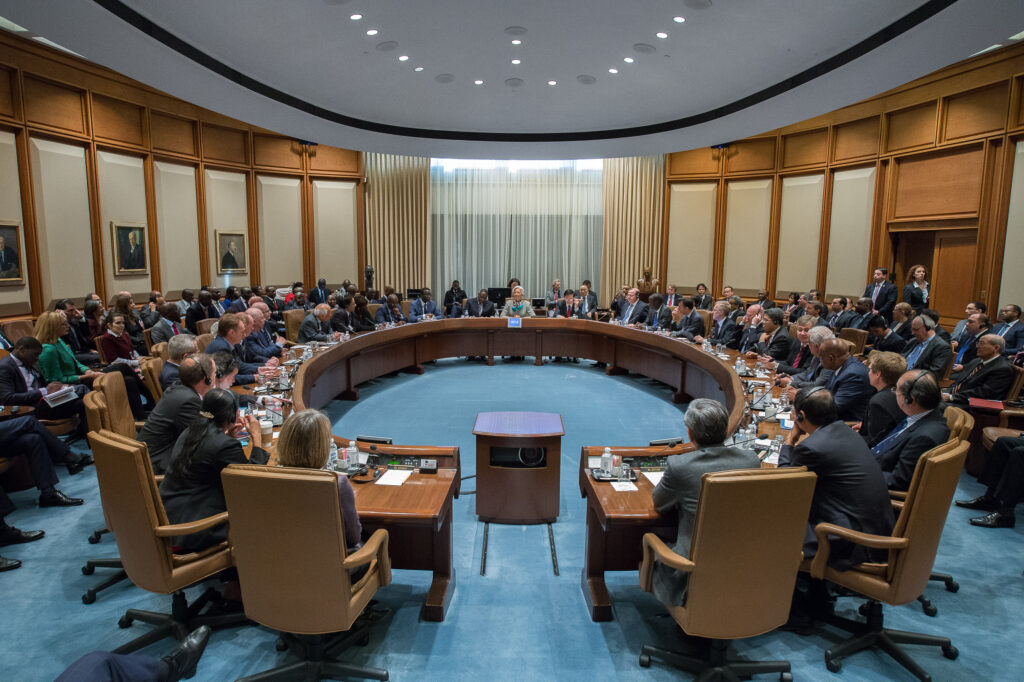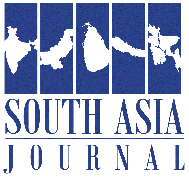
by Maheen Khan
Despite being one of the world’s largest recipients of International Monetary Fund (IMF) loans, Pakistan’s economy continues to falter, with rising poverty, inflation, and unemployment. In December 2024, Pakistan launched the Uraan Pakistan 5-Year Transformation Plan, a bold attempt to redefine the country’s economic trajectory. Whether or not Pakistan’s reliance on Structural Adjustment Programs (SAPs) works has been subject to much scrutiny, given its unending debt cycle. Pakistan has undergone 25 IMF programs to date, failing to deliver lasting progress. Can the Uraan Plan finally chart a course toward sustainable growth?
A New Hope?
For years, Pakistan has been caught in a cycle of dependency—a self-perpetuating condition characterized by heavy reliance on external borrowing to finance fiscal deficits, a narrow export base that limits economic diversification, chronic structural vulnerabilities, and persistent political instability that stifled economic autonomy and sustainable growth. This cycle left the country vulnerable to external shocks—such as global market volatility and commodity price fluctuations—and internal policy discontinuities.
To revive Pakistan’s current economic status, the government introduced a “homegrown economic revival program” termed the Uraan Pakistan 5-Year Transformation Plan. The program represents a new attempt to break the cycle of dependency and usher in sustainable development. The plan is based on 5 E’s – Export, E-Pakistan, Environment, Energy, and Empowerment – with key reforms targeting tax collection, export-oriented growth, diversification through technology and renewable energy, and increased investment in human capital. The plan aims to make Pakistan a USD $1 trillion economy by 2035 by undertaking comprehensive reforms across key sectors.
On the whole, while Uraan presents a bold vision for economic transformation, its lack of specificity, combined with mounting IMF conditionalities, leaves critical questions unanswered.
The export component focuses on expanding and diversifying trade through trade agreements like the European Union’s Generalized Scheme of Preferences Plus scheme, the ASEAN Trade Development Conference, and a Free Trade Agreement (FTA) with the Gulf Cooperation Council. Programs like the Export Readiness Program target the development of small and medium enterprises and enhanced market access, while tariff rationalization—which involves the adjustment of tariffs to align with consumer affordability—can promote diversification into areas such as technical textiles. Through such measures, Uraan aims to achieve growth in annual exports. However, past subsidies for exporting industries—particularly those in low-value-added sectors such as commodity textiles and agriculture—have not significantly boosted export performance, raising concerns about the effectiveness of current policy measures.
Separately, the E-Pakistan initiative aims to emphasize technological innovation and infrastructure like fiber optics and digital governance. On the energy front, the plan emphasizes transitioning to renewables with accompanying measures like green building codes, but lacks clear targets and timelines on how Pakistan can overcome its heavy reliance on coal and Regasified Liquefied Natural Gas imports while ensuring energy equity. The final pillar, Equity and Empowerment, aims to enhance early childhood education by launching strategic interventions to reduce out-of-school children and fostering youth leadership through various development programs such as Youth Peace Development Corps, Youth Leadership awards, and the Prime Minister Laptop scheme. However, the meager 0.9 percent budget increase raises doubts about the feasibility of addressing deficits in the country’s overall education infrastructure.
On the whole, while Uraan presents a bold vision for economic transformation, its lack of specificity, combined with mounting IMF conditionalities, leaves critical questions unanswered: how will these goals be financed, and who will bear the costs?
The Debt Trap
As of 2024, Pakistan’s external debt has urged to USD $133.5 billion — 36.4 percent of its Gross Domestic Product (GDP) — and is projected to triple to USD $411.29 billion by 2029 without corrective measures. Rising debt servicing costs, exceeding USD $26.11 billion, strain resources and leave little to address structural challenges.
In this regard, the IMF has expressed deep concerns about Pakistan’s debt, suggesting that it is approaching unsustainable levels. The persistence of these unsustainable levels may lead to undesired economic consequences, including default. Although Pakistan has managed to avoid such a crisis thus far, there are still concerns that it has failed to implement its reform commitments under previous IMF programs, including fiscal consolidation and tax reforms.

At the heart of the fiscal dilemma is undermining efforts for sustainable growth. To tackle fiscal deficits, the government frequently increases taxes, particularly indirect ones. Yet, tax revenue still stands at an inadequate 10.8 percent of GDP — of which 60 percent is drawn through indirect taxes, thereby heavily burdening lower-income groups.
Moreover, Pakistan’s taxation system remains ineffective, with 70 percent of direct revenue reliant on the withholding of taxes. Such a system relies heavily on compliance rather than a wide tax base, which captures a large number of individuals and businesses. This weakens wealth redistribution and long-term growth prospects. Uraan’s tax-to-GDP target of 16-18 percent appears unattainable without significant reforms, particularly given the dominance of the informal sector and widespread tax evasion.
However, there is a positive trajectory in the Consumer Price Index (CPI), with the inflation rate falling to 1.5 percent in February 2025, a near-decade low. This reduction is commendable as managing inflation and growth is a tough call for any government. However, the core inflation rate remains high: urban areas have seen a 7.8 percent year-on-year increase as of January 2025 while rural areas are at 10.4 percent, indicating that the cost of essential goods continues to rise sharply.
Moreover, the government’s fiscal approach is also concerning. The 6.9 percent budget deficit —financed through domestic and foreign borrowing — burdens the banking and public sectors. Additionally, funding USD $3.82 billion in subsidies through borrowing and higher taxes risks escalating inflation and widening socioeconomic divides. This reliance on borrowing raises concerns about the sustainability of Uraan’s long-term fiscal strategy.
Gaps in the Uraan Plan
The World Bank recently highlighted a critical gap in the 5E Framework, noting that while a national vision has been established, it has yet to be broken down into actionable sectoral plans, shared by all tiers of government, including provincial governments. Without addressing overlapping responsibilities and bureaucratic inefficiencies, the plan risks becoming another aspirational document with minimal real world impact.
The government’s success in curbing inflation reflects effective monetary tightening and an effort to lower commodity prices. But this contrasts sharply with the earlier 12 percent annual inflation projection, which suggests that the government was willing to loosen monetary policy in order to drive growth. Despite this success on the inflation front, however, weak investment and structural vulnerabilities persist. Pakistan’s foreign reserves of USD $16 billion struggle against its external debt of over USD $100 billion.
Given global economic headwinds, tariff wars, and geopolitical competition, Uraan’s USD $60 billion export target looks ambitious. Its energy transition critique overlooks the global energy market realities of today. These systemic challenges demand an environment conducive to higher private investment, which requires political stability and consistency in policies in the long run — gaps that Uraan fails to address. In addition, the program doesn’t account for industries identified for IT development.
Furthermore, while the program acknowledges Pakistan’s climate challenges, it lacks a tactical vision for sustainable structures and frameworks that would drive climate adaptation and environmental management across federal, provincial, and local levels. Moreover, energy security remains a key issue. While the China-Pakistan Economic Corridor (CPEC) is central to Pakistan’s energy strategy — because it mobilizes essential capital and expertise for large-scale power generation and infrastructure modernization — its top-down approach neglects local ownership and input. This disconnect can result in projects that are less responsive to regional needs and hinder the development of local capacity, undermining the long-term sustainability and resilience of Pakistan’s energy sector. Moreover, political tensions, especially in Balochistan, and economic weaponization further hinder its potential despite substantial Chinese investment.
All of this is compounded by the country’s geopolitical challenges and internal security crises. The U.S.-China rivalry places Pakistan in a hot spot, requiring a balanced approach to avoid regional conflict. The strained ties with India stifle regional trade potential. Meanwhile, Afghanistan’s instability under Taliban rule and underutilized relations with Iran add to the burden.
Longstanding grievances, insurgencies, and rising militancy in Khyber Paktunkhwa further strain national security. Uraan provides little clarity on financing counter-militancy efforts, casting doubt on its ability to ensure security while targeting a USD $1 trillion economy by 2035.
These security challenges reflect Pakistan’s failure to invest in human capital and inclusive growth. Pakistan has persistently recorded low Human Development Index (HDI) scores, currently ranking 164th out of 193. This is compounded by extractive institutions that hinder inclusive growth by concentrating IMF program benefits among wealthy elites — including the corporate sector, feudal landlords, political leaders and the military — who make up USD $17.4 billion (or 6 percent) of the country’s annual output.
Economic progress demands a governance model built on transparency, accountability, and inclusion; without reform, entrenched privileges and structural weaknesses will continue to hold back Pakistan’s potential for growth and prosperity.
What’s Next?
For decades, Pakistan has been trapped in a cycle of borrowing, austerity, and short-term fixes. While Uraan offers a glimmer of hope, its success hinges on political stability, transparent governance, inclusive growth, and strategic investments in human capital.
While Uraan offers a glimmer of hope, its success hinges on political stability, transparent governance, inclusive growth, and strategic investments in human capital.
Political instability does not necessarily render economic planning futile; the key lies in institutional continuity, where policies endure beyond political transitions and shocks. To break the cycle, Pakistan must downsize bureaucracy, streamline roles across federal and provincial levels, eliminate redundancies, and prioritize policy implementation. Tax reform is also vital; the focus must shift toward progressive taxation to ensure the wealthy contribute their fair share. Without this, both economic stability and social cohesion will remain at risk. Public-private partnerships should lead the charge in investing in renewables and fostering innovation. Localized solutions – such as community-driven planning councils, targeted investments in local infrastructure, tailored public-private partnerships, and capacity-building initiatives for local administrations – will be essential for addressing regional disparities in development. In the same spirit, strengthening local governments will be key for driving grassroots change.
However, true progress requires more than technical reforms; it requires political unity and a collective belief in Pakistan’s potential. The real question is not whether the IMF will lend again, but whether Pakistan can commit to investing in its own self-reliance and long-term prosperity.
The article appeared in the southasianvoices
